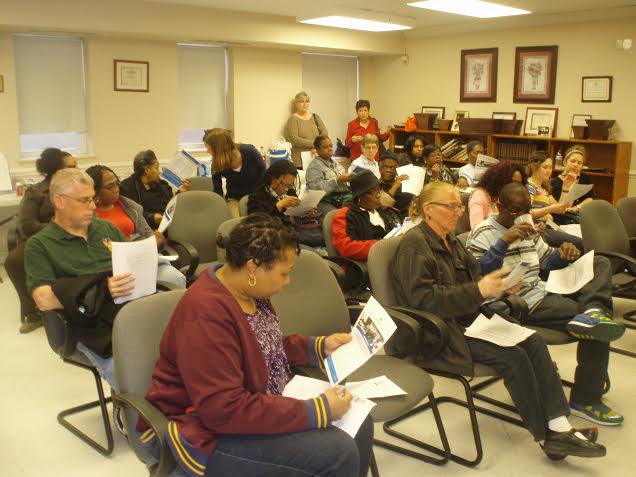
(photo credit: Felicia Couts)
For the first time in over 40 years, Washington, D.C. is planning a major policy overhaul of the system that currently dictates where families have the right to send their children to public school.
On Wednesday, April 2, the Community Benefits Coordinating Council (CBCC) convened a meeting with Deputy Mayor for Education (DME) Abigail Smith. About 40 residents of Southwest and Navy Yard—many of whom have children and grandchildren in DC public schools— joined the DME to discuss the changes under consideration, and provided feedback about the process and its implications.
Against a backdrop of school closures, overcrowded schools, underperforming schools, and with nearly 44 percent of District students enrolled in charters, the “Student Assignment and DCPS School Boundaries Review Process” is seeking to develop public policy mechanisms to ensure that a greater number of students have more equitable access to a wider array of high quality schools.
The first phase of the process commenced in October 2013 and concluded in March of this year. Throughout that period, the DME sought community input in order to define the desired outcomes that a new school assignment and boundaries policy would seek to achieve. In addition to holding over 22 focus groups across all eight wards, the DME has convened an advisory committee comprised of a broad representation of education and planning policy stakeholders to help guide the process. Amidon-Bowen PTA President Martin Welles serves as a member of this committee as one of two representatives from Ward 6.
The second phase of the process, which is now underway, began on April 5 with a public presentation of the DME’s preliminary policy options for new boundaries, feeder patterns, and choice allocations. The three so-called “policy examples” lay out different approaches to school assignment.
In Policy Example A, students and their parents would be given “choice sets,” and asked to rank their preferred schools within an assigned geographical boundary. In other words, regardless of where they live, students would not be guaranteed a slot in a particular school, creating uncertainty for families who might choose their residence based on the promise of a spot at a neighborhood school.
Policy Example B would provide students with the right to attend one elementary school, one middle school, and one high school, based on a geographical boundary. However, each school would have a percentage of its seats set aside for children who otherwise would be slated to attend low-performing schools.
Policy Example C would, among other stipulations, dictate boundaries for elementary schools, choice sets for middle schools, and a citywide lottery for high schools.
Simultaneously with the release of these policy examples, the DME’s office launched a website, www.engagedc.org, where community members can get an in-depth look at each policy example, ask questions, and provide feedback on the three options. The opportunities for input will last through June, at which point the Advisory Committee will use the feedback to guide their final recommendation to the DME, the Chancellor, and the Mayor, which will be made in August. The final plan will be presented in September.
More information and sign-up forms for community working groups can be found online at www.dme.dc.gov/boundaries or by phone at 202-478-5738.
By: CBCC Education Committee


